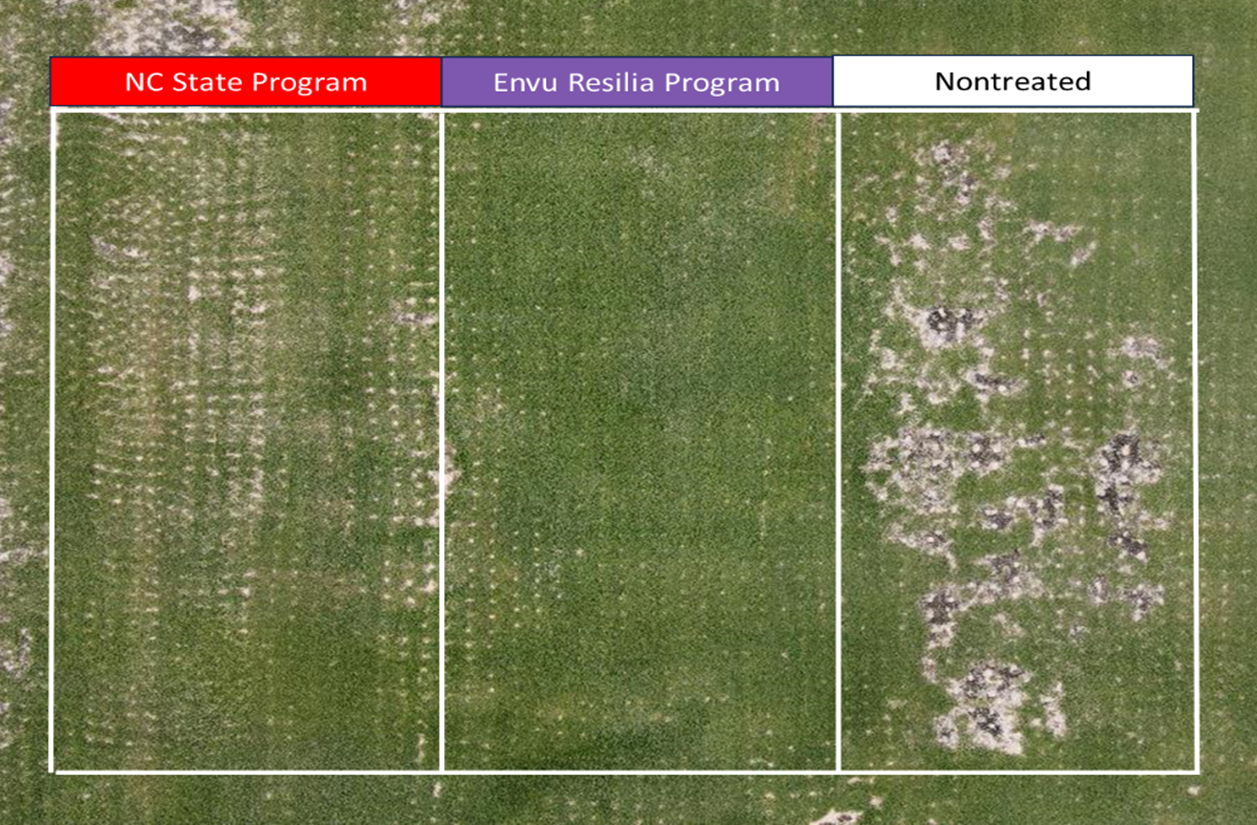Preparing for Root Diseases
With increasing costs around labor and resources, superintendents should address pathogen populations early with simple, proactive steps to ease the burden of potential curative disease measures later in the season. Most soil-borne pathogens begin infecting roots in cool, wet weather of spring – so starting applications soon sets the stage for effective and efficient disease management all year long.
- Early season knockdown of fungal diseases with DMI fungicides:
-
All of these diseases become active in early spring (at indicated soil temperature), although symptoms may not appear until summer:
- Fairy ring: 55-60°F at 2” depth
- Brown ring patch:55-60°F at 2” depth
- Take-all patch: 55-60°F at 2” depth
- Summer patch: 65-70°F at 2” depth
- Anthracnose: 65-70°F at 2” depth
- Dollar Spot: 60°F air temperature
- It is well documented that early season applications targeted for these diseases will reduce inoculum and disease pressure for extended periods by keeping fungal populations low
- Early season DMI applications like Densicor®, Tartan® Stressgard® or Mirage® Stressgard will be effective against all of the important diseases listed above
- With a light watering-in after application (0.1 - 0.125”), DMIs are highly effective tools in managing damaging root and crown diseases in the spring
- Repeat applications for these diseases should be made every 28 days, regardless if the weather has cooled since your initial application
-
All of these diseases become active in early spring (at indicated soil temperature), although symptoms may not appear until summer:
-
Addressing Pythium root diseases - Pythium root rot is caused by over 30 different species – many of which start infecting turf in cool, wet spring weather:
- Applications for Pythium root rot should start when 2” soil temps average 60°F for five consecutive days
- Many start with spring applications of Banol® at 2-3 oz/1000 sq ft (Banol First Program)
- Be sure to water Pythium root rot applications in with 0.1 - 0.125” of irrigation after application for optimal efficacy
- Ensuing rotational applications should include Signature® XTRA Stressgard alone or in combination with Banol for Pythium root diseases and to maximize plant health with enhanced photosynthetic efficiency and stress mitigation of Stressgard
- Segway® or Serata® are highly effective rotational fungicides
-
Don’t neglect the nematodes - plant parasitic nematodes like sting, stunt, root knot, spiral, lance, and ring all become active and begin feeding in the spring when turfgrass root production is peaking:
- Saturated conditions that compromise root health may create further susceptibility to underlying nematode populations
- If nematode problems are confirmed, consider making an early season nematicide application along with your fungicides to protect roots and reduce nematode populations
- Indemnify® can be used to target root-infecting nematodes with a single spring application. An additional fall application can be considered if needed
- Indemnify should be applied at 0.39 fl oz/1000 sq ft (“spot-applications” as indicated on the label would encompass any and all greens on a course)
- Irrigate with 0.1 to 0.125” within 24 hours of application
-
Resilia™ will help control all of the previously mentioned pathogens preventatively
- Target this application after the first or second Banol application and water in with 0.1 to 0.125”
- Applications made every 28 days or alternated on a 56-day schedule with Mirage, Tartan, and/or a pythium product like Banol or Segway/Serata will provide season-long protection
- Combine this with Signature® XTRA Stressgard on a 7- to 14-day schedule for enhanced photosynthesis to maximize plant health
- Need more info – for more information, contact your Envu Area Sales Manager if you need assistance

